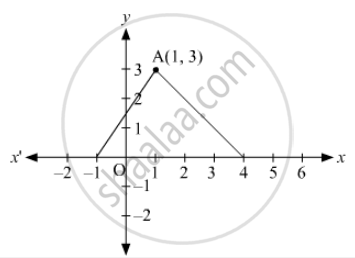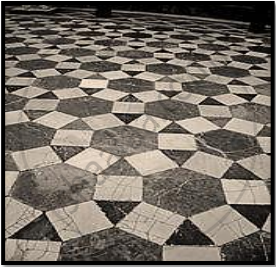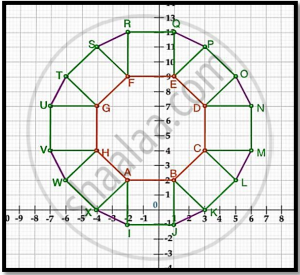Advertisements
Advertisements
Question
Point (3, 0) lies in the first quadrant.
Options
True
False
Solution
This statement is False.
Explanation:
Since the ordinate of the point (3, 0) is zero.
So, the point lies on x-axis.
APPEARS IN
RELATED QUESTIONS
Find the ratio in which the point (2, y) divides the line segment joining the points A (-2,2) and B (3, 7). Also, find the value of y.
The base BC of an equilateral triangle ABC lies on y-axis. The coordinates of point C are (0, -3). The origin is the midpoint of the base. Find the coordinates of the points A and B. Also, find the coordinates of another point D such that ABCD is a rhombus.
Show that the points (−4, −1), (−2, −4) (4, 0) and (2, 3) are the vertices points of a rectangle.
Write the ratio in which the line segment doining the points A (3, −6), and B (5, 3) is divided by X-axis.
If P (2, p) is the mid-point of the line segment joining the points A (6, −5) and B (−2, 11). find the value of p.
If the points P (x, y) is equidistant from A (5, 1) and B (−1, 5), then
In Fig. 14.46, the area of ΔABC (in square units) is

If A(x, 2), B(−3, −4) and C(7, −5) are collinear, then the value of x is
In which ratio the y-axis divides the line segment joining the points (5, – 6) and (–1, – 4)?
A tiling or tessellation of a flat surface is the covering of a plane using one or more geometric shapes, called tiles, with no overlaps and no gaps. Historically, tessellations were used in ancient Rome and in Islamic art. You may find tessellation patterns on floors, walls, paintings etc. Shown below is a tiled floor in the archaeological Museum of Seville, made using squares, triangles and hexagons.

A craftsman thought of making a floor pattern after being inspired by the above design. To ensure accuracy in his work, he made the pattern on the Cartesian plane. He used regular octagons, squares and triangles for his floor tessellation pattern

Use the above figure to answer the questions that follow:
- What is the length of the line segment joining points B and F?
- The centre ‘Z’ of the figure will be the point of intersection of the diagonals of quadrilateral WXOP. Then what are the coordinates of Z?
- What are the coordinates of the point on y-axis equidistant from A and G?
OR
What is the area of Trapezium AFGH?
